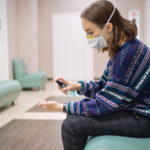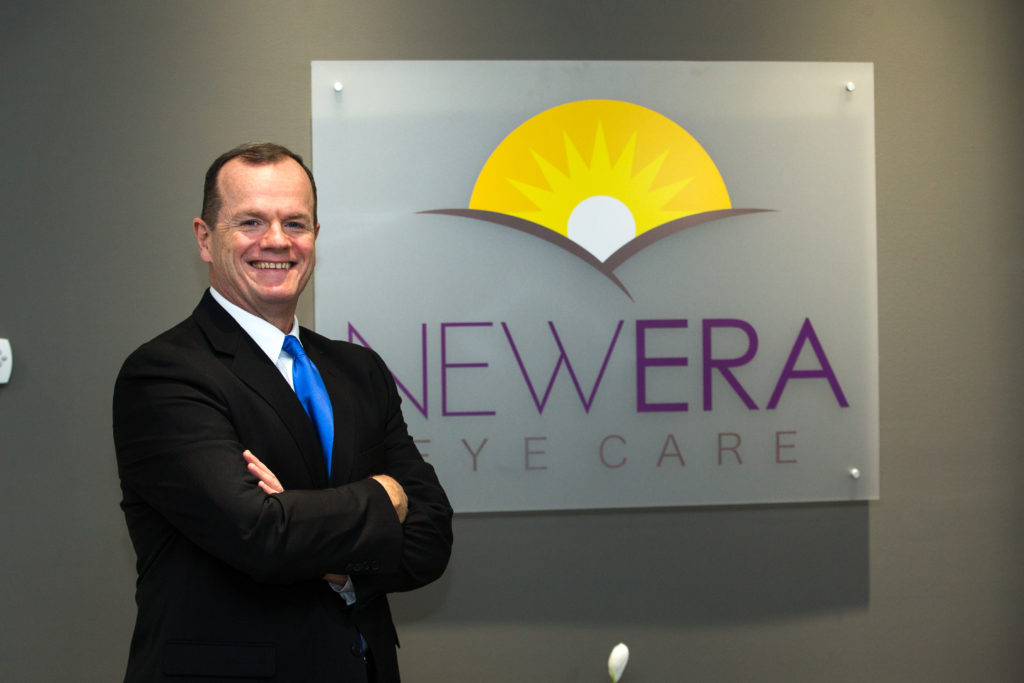By Brian O’Donnell, OD

June 10, 2020
Patient-flow bottlenecks have never been desirable, and now as we attempt to recover from pandemic shutdowns, they are even less desirable. Here is how my practice is maintaining the same great service our patients have always expected while also assuring patient flow keeps moving.
Started Altering Patient Flow During Shutdown for Emergency Care
Like many practices, we continued seeing emergency eyecare patients during the shutdown. Many other eyecare providers in my area of Northeast Pennsylvania decided to shut down entirely, and sent patients with emergencies to us.
During those emergency appointments, the whole staff consisted of my wife, who serves as office manager, and myself. I did not want to put the other staff members at risk for illness. We blocked off the entryway to our office so patients would go directly to the exam room, bypassing all other areas of the office, such as the optical.
In the last week of the shutdown we rearranged our office completely in preparation for our reopening based on the Centers for Disease Control guidelines and those published by the Pennsylvania Department of Health. Our plan is to slowly ramp back up to seeing our typical 20-25 patients per day by June’s end.
Limiting Patient Presence to No More than 10 at Time in Office
The Pennsylvania pandemic safety guidelines requires businesses to restrict the office to 10 or fewer people at any one time.
Other Articles to Explore
We have operated off of our plan of “Speed with Service” since New Era Eye Care opened, and find that it is more helpful now than ever before. It is a philosophy my wife and I designed, and it has worked wonders. This model conforms exactly with what is being asked by our state to guard against the spread of COVID-19. The key is to avoid bottle-necking of patient flow and to keep a respected social distance between patients. Our staff has been trained ( and continues to be trained) on a philosophy of “no patient sits or waits.” The office design has very limited area for patient chairs. We don’t have a waiting room because we don’t expect our patients to wait.
Our patients are moving smoothly through an office with enhanced cleaning and sterilization. I am a huge survey person and the surveys of our patients always came back with happiness on the cleanliness of our office. As we reopen, we are taking that cleanliness to a hyper-level.
Our optical staff always enjoyed time with patients helping them to pick out and try on frames. We don’t want to lose that interaction or make it less enjoyable. So, we have enhanced the patient experience in the optical by purchasing decorative baskets in which opticians place all frames the patient is interested in. After the patient leaves, each of those frames is thoroughly cleaned with a 50/50 solution of 3 percent hydrogen peroxide and water before being placed back on the board.
We always thoroughly cleaned, and that system is still in place, but now is implemented after each patient rather than just hourly. The only difference is one particular staff member has that assignment now. The reason for assigning it to a specific employee is to have total certainty and accountability that it is being done correctly, each time. Another specific staff member has been assigned all counters and other areas to be cleaned between patients.

The new guide for staff that Dr. O’Donnell and his wife, Marcy, put together. The guide provides structure for the training delivered to prepare the practice to provide a safe, comfortable experience for patients.
Preparing Staff to Be Ready to Keep Patients Moving Efficiently–and Safely
We have provided links for staff to be educated on the science of COVID-19 prevention, along with the rules and guidelines issued by our state and the CDC. We had an all-hands-on-deck meeting just before reopening. My wife and I created a “Patient Protection Plan for Staff and Patients.” This entire manual was reviewed by all employees and requires the review of how-to videos (such as proper hand-washing methods), new patient-flow guidelines, new rules for the optical (cleaning of frames), appropriate temperature taking and the use of screening questionnaires with patients. After reviewing the manual, our staff did role-play exercises on how to handle common patient questions about COVID-19 and our new routines, our new scheduling format and how to handle patient flow from their entry to our office to their exit.
Rearranging Office Furniture for the New Patient Flow
To keep the required social distance between patients we purchased a table that sits in front of the reception area. On that table we are keeping our credit-card processing machine. We have arranged the payment process so that only the patient handles their credit card. The presence of the table, staffed by an employee, also serves to warm up the atmosphere. We cannot just be a sterile environment and not have human interaction.
We researched plexiglass dividers heavily, and ultimately, decided against placing one at that table between patient and employee. The table is aesthetic and nicely respects social distances. If our staff is constantly masked, and the patient also is wearing a mask, we feel we can prevent the spread of COVID-19 without putting up a plexiglass partition.
Maintaining Our Office Culture
My push is to keep patients and staff safe while maintaining the welcoming spirit of our office. I don’t want a sterile, robotic patient experience. I often use the famous axiom with staff about how we can’t always control what’s happening, but we can control how we respond to it. I am trying to do that now–respond in a responsible way that retains what patients love best about visiting our office.
 Brian O’Donnell, OD, owns New Era Eye Care in Shavertown, Penn. To contact: bod@neweraeye.com.
Brian O’Donnell, OD, owns New Era Eye Care in Shavertown, Penn. To contact: bod@neweraeye.com.

























